Note: This movie is being released on Blu-ray by Olive Films (www.olivefilms.com – www.facebook.com/olivefilms) on Oct. 18th.
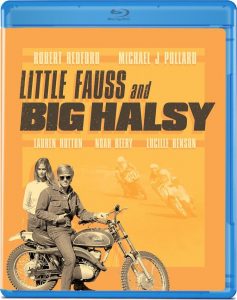 This week, Olive Films have unearthed a long out-of-print and buried title that many have long wondered about. Despite boasting a big name cast, Little Fauss and Big Halsy didn’t get much love from the press or moviegoers. It arrived on the heels of the breakout hit Easy Rider and in several respects had similar story elements. A loose, rambling narrative and a lot of time spent on motorbikes with two eccentric characters.
This week, Olive Films have unearthed a long out-of-print and buried title that many have long wondered about. Despite boasting a big name cast, Little Fauss and Big Halsy didn’t get much love from the press or moviegoers. It arrived on the heels of the breakout hit Easy Rider and in several respects had similar story elements. A loose, rambling narrative and a lot of time spent on motorbikes with two eccentric characters.
The production encountered troubles behind the scenes. Reportedly, stars Robert Redford and Michael J. Pollard didn’t get along… it may be exaggerated, but I’ve read in some reports that the two simply couldn’t stand each other. Redford also expressed concerns on set about his character being too unlikable and wanted to tone him down. By the time the film was finished, critics pounced on the film, even if they couldn’t seem to agree what was wrong with it. Some called it pretentious, many hated Redford’s character and about half criticized Pollard’s mannerisms and delivery (while almost as many thought he was actually the best thing in the movie).
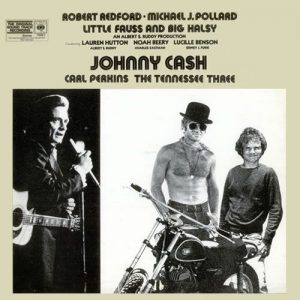 The movie did earn a Golden Globe nomination for its soundtrack filled with original songs by Johnny Cash. Otherwise, it flopped and pretty much disappeared from view. Even finding a VHS copy has been a chore. So it’s fantastic to see the movie cleaned up and arriving in high definition widescreen (in 2:35:1 anamorphic Panavision, no less) after such a lengthy absence. And here’s the interesting part; while admittedly strange and uneven, it’s actually a lot better than it got credit for during its release.
The movie did earn a Golden Globe nomination for its soundtrack filled with original songs by Johnny Cash. Otherwise, it flopped and pretty much disappeared from view. Even finding a VHS copy has been a chore. So it’s fantastic to see the movie cleaned up and arriving in high definition widescreen (in 2:35:1 anamorphic Panavision, no less) after such a lengthy absence. And here’s the interesting part; while admittedly strange and uneven, it’s actually a lot better than it got credit for during its release.
Little Fauss (Michael J. Pollard) is an oddball motorcycle enthusiast who dreams of competing with the pros. While he’s great with gears, tuning and fixing bikes, he’s not the strongest driver. Halsy (Robert Redford) is a smooth-talking, womanizing, opportunistic biker trying to build his career and make his way to racing superstardom. However, a suspension for bad behavior has him sidelined. Halsy sees the benefit of befriending the naive, straight-forward Fauss to get further along in his career and convinces the unknown kid to allow him to secretly race under his name.
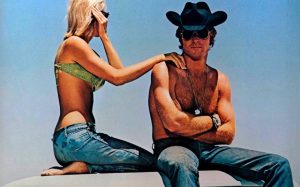 The opening scenes are the roughest, in which viewers will have to get used to these less-than-perfect characters. Halsy uses each and every person he encounters for his own benefit, treating them horribly in the process. In some respects, one can see why audiences responded so negatively to the movie. Redford was a big star and unlike his unusual roles, this character is wholeheartedly selfish, sexist and generally repellant. Even still, his natural charisma allows him to easily take advantage of those around him, including Fauss.
The opening scenes are the roughest, in which viewers will have to get used to these less-than-perfect characters. Halsy uses each and every person he encounters for his own benefit, treating them horribly in the process. In some respects, one can see why audiences responded so negatively to the movie. Redford was a big star and unlike his unusual roles, this character is wholeheartedly selfish, sexist and generally repellant. Even still, his natural charisma allows him to easily take advantage of those around him, including Fauss.
While the narrative is as loose and freewheeling as its counterculture characters, it’s fascinating to see a movie with a lead so deplorable. One expects it was (and perhaps still is) frustrating for some to witness Fauss and others be charmed and won over by Halsy. Personally, I found it to be an interesting and believable approach – there certainly are people out there just as narcissistic and chauvinistic who seem to be able to manipulate those around them.
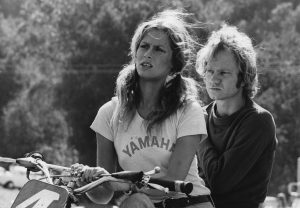 All the same, it does take some getting used to. The movie improves significantly from the halfway point as tension rises between the pair. When a woman named Rita Nebraska (Lauren Hutton) enters the picture, things get ugly. Fauss develops a crush, but never stands a chance against Halsy and soon becomes jealous. As such, confrontations arise between the two very different personalities. While you’d never know that the actors disliked each other on set, the fights are much more compelling and one wonders if their natural differences added to these moments. Fauss really digs his heels in and appears to be only one calling out Halsy on his lies (just about everything he says seems to be a warped version the truth). Yet as they go their own ways, both begin to try and adopt some of each other’s characteristics.
All the same, it does take some getting used to. The movie improves significantly from the halfway point as tension rises between the pair. When a woman named Rita Nebraska (Lauren Hutton) enters the picture, things get ugly. Fauss develops a crush, but never stands a chance against Halsy and soon becomes jealous. As such, confrontations arise between the two very different personalities. While you’d never know that the actors disliked each other on set, the fights are much more compelling and one wonders if their natural differences added to these moments. Fauss really digs his heels in and appears to be only one calling out Halsy on his lies (just about everything he says seems to be a warped version the truth). Yet as they go their own ways, both begin to try and adopt some of each other’s characteristics.
For all their experimentation, though, fundamentally these guys can’t make themselves change, and old habits quickly return. Of course, competing on the track is the only place they can settle their issues. As mentioned, the story isn’t always focused, but it keeps your brain busy trying to interpret what these tangents are all about. This was the late 60s when there was a lot more experimentation in storytelling. And by today’s standards, it’s refreshing to see.
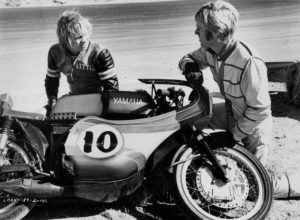 Pollard should be given credit; he’s likable and his idiosyncrasies aren’t distracting, despite comments made at the time of release. The music from Cash and others adds a nice atmosphere, the biking stuff (including some nasty falls and impressive point-of-view shots) are great and the widescreen image quality is much better than anticipated. It’s incredibly sharp and one can imagine it looks even better here than it did at cinemas in 1970.
Pollard should be given credit; he’s likable and his idiosyncrasies aren’t distracting, despite comments made at the time of release. The music from Cash and others adds a nice atmosphere, the biking stuff (including some nasty falls and impressive point-of-view shots) are great and the widescreen image quality is much better than anticipated. It’s incredibly sharp and one can imagine it looks even better here than it did at cinemas in 1970.
Little Fauss and Big Halsy probably does suffer in comparison to Easy Rider, but that doesn’t mean it isn’t an compelling and effective film in its own right. It certainly held my attention throughout its strange 99 minutes. For me, it stands as one of the better films made in the same vein as Rider and sticks in your head days later. And I’m not alone; Robert Redford’s son apparently thinks this is his dad’s best movie. In the end, it’s great to see this solid little biker flick getting its due and enthusiasts of this genre will undoubtedly find it of interest.


